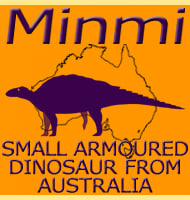In Depth
Himalayasaurus was named after the Himalaya Mountains where the holotype material was first discovered. The description of Himalayasaurus was based upon very incomplete post cranial remains and most interestingly teeth that were unlike any other Triassic aged ichthyosaur that had been seen at the time. These teeth were larger, more flattened and with cutting edges, whereas all other previously known Triassic era ichthyosaurs at that time had smaller and more conical teeth. This led some to doubt the validity of the Himalayasaurus genus, which in term led to Himalayasaurus being labelled as a nomen dubium.
Then in 2013 another new ichthyosaur named Thalattoarchon was formally described, and this description ended up being the second time that a Triassic aged ichthyosaur was identified as having unusually large teeth. In fact, the teeth of Thalattoarchon are so similar to those of Himalayasaurus that the only noticeable difference between them are the grooves that run across the tooth crowns of the teeth of Himalayasaurus. In addition to the teeth similarity, Thalattoarchon is known to have lived at an earlier time in the Triassic than Himalayasaurus, which means that while Himalayasaurus was the first large toothed Triassic ichthyosaur genus to be discovered, it was not the first to evolve.
Himalayasaurus remains a slightly dubious genus because of difficulties in referring further ichthyosaur remains to the genus, though the identification of such unique teeth could conceivably help in attributing new remains. The most recent analysis of the Himalayasaurus remains has led to the conclusion that Himalayasaurus was probably a shastasaurid ichthyosaur, a type that seems to have been most common during the Triassic. The partial remains of Himalayasaurus have been identified as coming from an individual that has been estimated to be roughly around fifteen meters in length. This might sound like a bit too large, but individuals of the relative shastasaurid genus Shonisaurus have been seen to have easily attained size of fifteen meters long, while the type genus of the group, Shastasaurus, was even bigger than this.
Further Reading
- An ichthyosaur fossil from the Qomolangma Feng (Mt. Everest) region - Gu ji zhui dong wu yu gu ren lei yan jiu suo ji kan 9:7-10 - Z. -M. Dong - 1972. - The status of Himalayasaurus tibetensis (Ichthyopterygia). - Paludicola 2 (2): 174–181 - R. Motani, M. Manabe & Z. -M. Dong - 1999.










